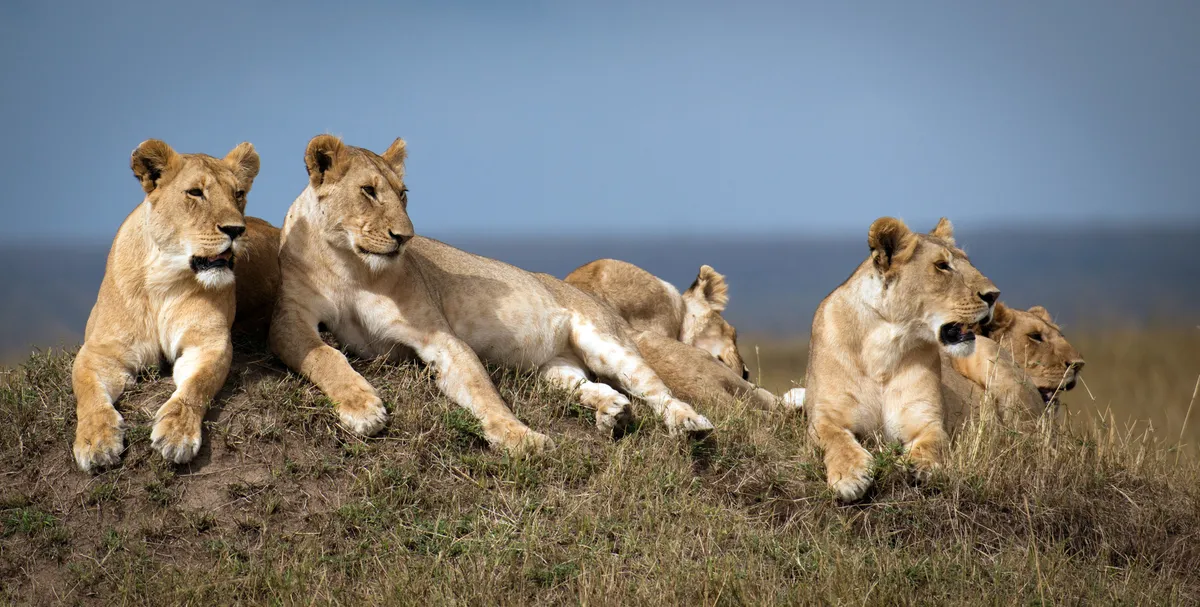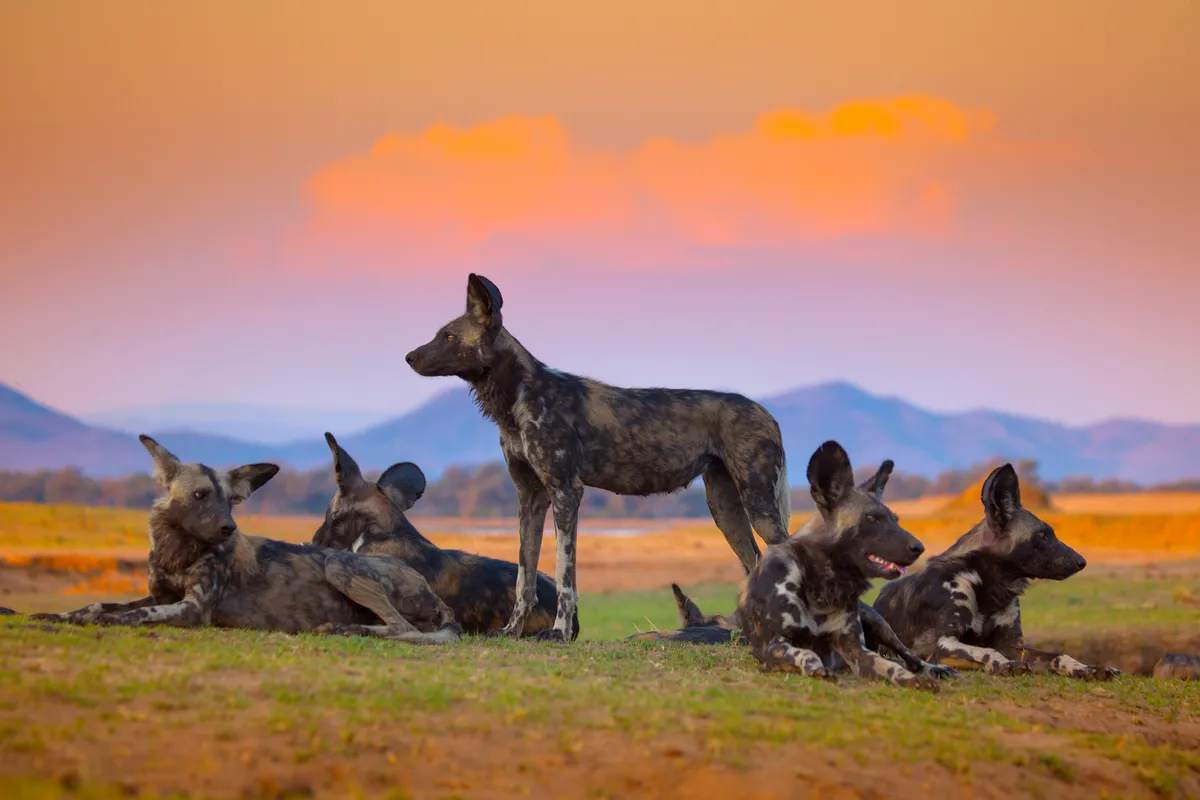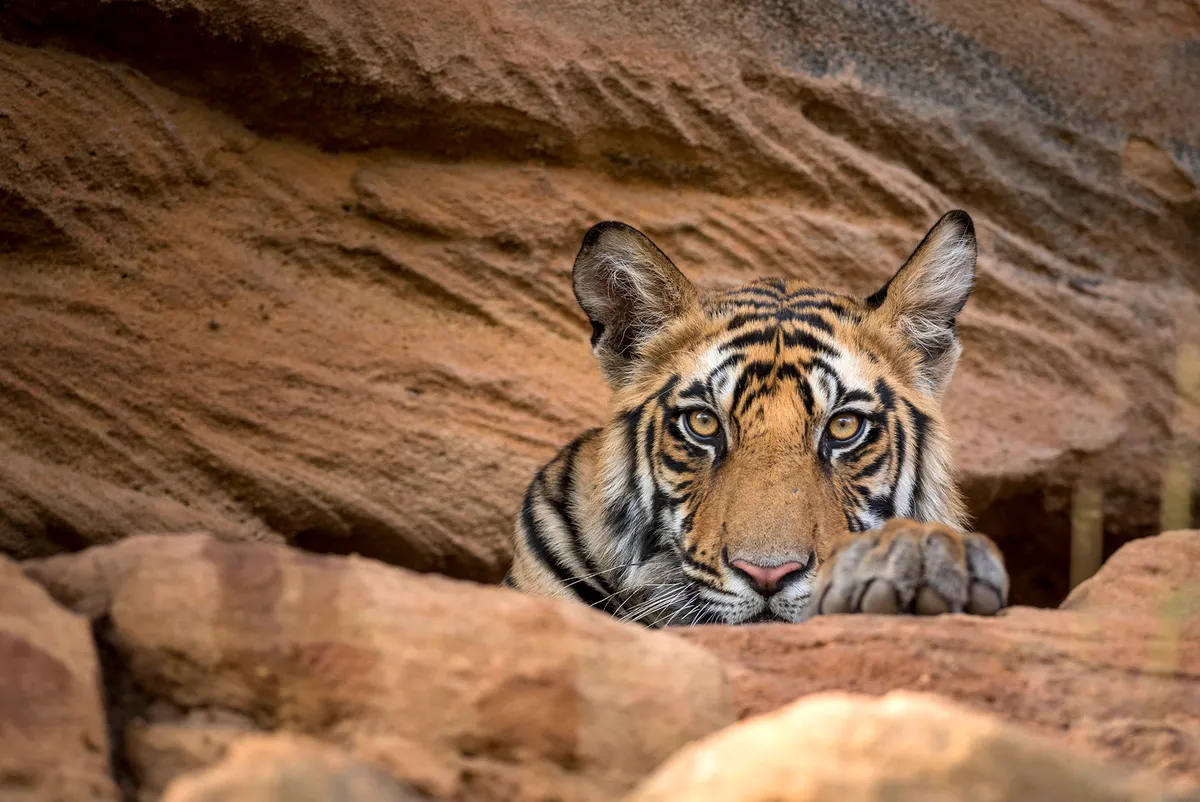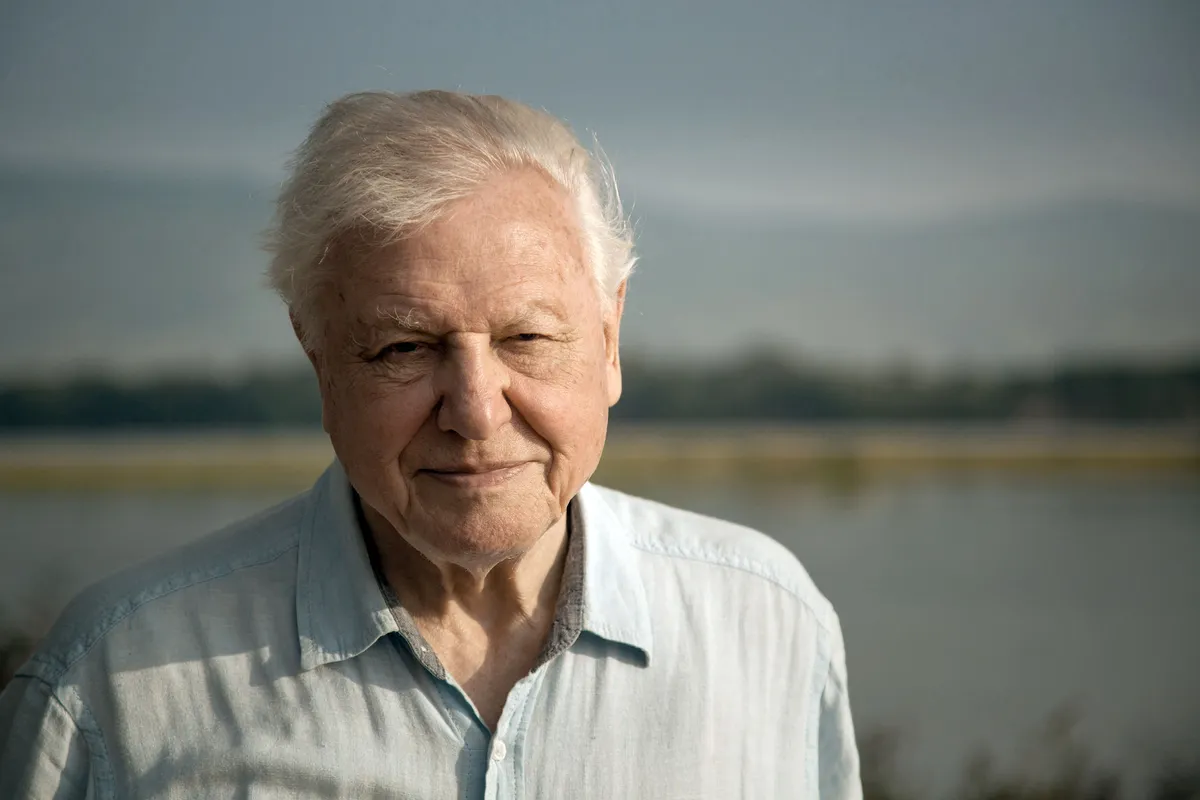What is Dynasties?
Dynasties is a new landmark series by from the BBC's Natural History Unit, focussing on animal families and the challenges they must face.
"These animals live as a pride or a troop or a pack and, if you are the ruler of that family, you get everything," says Michael Gunton, executive producer of Dynasties.
"You get all the mating, you get all the food, you are effectively the equivalent of the king. So, it's about the power of family, but it's also about the struggle to become the most powerful within the family."
The idea for Dynasties came about five years ago, when Gunton wondered "if there was another way of telling the stories of the natural world" that was different to the God's eye view of the world used in Planet Earth and Blue Planet.
"We never really spent time with the animals or understood the depth of their stories."
However in Dynasties, the team challenged themselves to spend all their efforts on just one group in each species. It was a risky endeavour - and one that Sir David Attenborough said was mad - what if the focus animal died? Or nothing happened? Or filming permissions changed? They would be completely stuck.
"While the risks were high, the potential benefits were also very high because if it works, the drama – the potential for true drama – is unprecedented," continues Gunton.
"In my pitch, I said, "If these work, you will feel like you're witnessing a true Shakespearean drama." Because often it is! Mother against daughter, sister against sister, loyal subject against king. Of course, like Shakespeare there are moments of humour too - these are, in the end, all uplifting, life-affirming films."
When is Dynasties on?
The first episode of Dynasties will air on Sunday 11 November at 8.30pm on BBC One.
View the episode guide on the BBC One website.
Which animals is Dynasties focusing on?
The series will be covering five species of animal (four mammals, one bird), with each episode focusing on one species.
1
Chimpanzee (episode one, Sunday 11 November)

In Senegal, David has been the alpha male of his group of 32 western chimpanzees for three years, and may soon get overthrown. Males don't usually rule here for much longer, and David doesn't have any allies for defending his leadership.
"Through speaking with scientists across Africa, we identified a group of chimpanzees in Senegal that we believed were at a turning point in their society," says Rosie Thomas, the producer and director of the Chimpanzee episode.
"David's brother had fought many battles to keep David in power, but he disappeared just before we started filming, leaving David isolated and vulnerable. Not only that, but in this group, there were more males than females. This meant there was intense competition among the males when females came into season. We felt like this whole situation would give us a chance to capture a power struggle."
David will need to face his rivals as the dry season settles in and temperatures soar, often to over 40C. Food and water are scarce, and his rivals are prepared to kill him for his crown.
Based at the Fongoli Research Project in south east Senegal, the camera team spent two years filming the group, with 309 filming days in the field lasting from 4am to 7pm and carrying approximately 80kgs of film kit.
"When we’re out on location, we would walk out to the chimpanzees to get to them there before dawn and stick with them all day until we lost the light, then we'd walk back and go home," continues Thomas.
"On a good day, we’d walk at least eight kilometres, but on a bad day we could travel up to 24! Between the three of us in the crew each day, we’d carry about 80 kilograms of kit, in temperatures that were usually about 40°C. As a team, we walked over 2400 kilometres!"
Facts about chimpanzees
- Chimps are human's closest living relative, sharing 98 per cent of our genetic DNA.
- It was once thought that chimps and bonobos were the same species, however they are no recognised as two distinct species. The chimpanzee species is split into four subspecies (the western chimpanzee subspecies is the focus for Dynasties), whereas the bonobo has not been split into any subspecies.
- Chimps are listed as Endangered on the IUCN Red List, and face a number of threats including habitat loss and fragmentation, killing for bushmeat, being captured for the illegal pet trade, and disease.
Click here to discover more amazing facts about chimpanzees.
2
Emperor penguin (episode two, Sunday 18 November)

Two emperor penguin parents, each with their own 5-month-old chick begging for food in Atka Bay, Antarctica. © Stefan Christmann
In the southernmost part of the world, after three months of feeding at sea, emperor penguins must battle with the elements to raise their chicks through one of the harshest winters on earth.
The largest of the extant (living) penguin species found on earth, emperor penguins partners form one of the strong bonds and raise a single chick together. 11,000 birds gather in Atka Bay, Antarctica, and through the winter, the males will huddle together to protect themselves and their egg in temperatures reaching -40C and windspeeds of up to 130kph.
“All the other Antarctic animals leave in the winter; but emperor penguins arrive," says Miles Barton, producer of the Emperor episode.
“These thousands of penguins have to find a way to keep warm. They do it through a spectacular way of huddling. It is a massive feat of cooperation because every emperor father needs the same thing at that time, to keep warm, and huddling together is the only way to achieve that.”
"The team got wonderful time lapses of the huddle, where you see it moving around almost like a single organism, due to the constant movement of all the individual penguins."
The camera team joined the emperor penguins for the winter, based at Alfred Wegener Institute's Neumayer III Base in Antarctica, also battling the winter elements, including:
- storms lasting up to eight days, with windspeeds of up to 129kph
- temperatures as low as -44.3C (-62.3C with wind chill) - there were only three days during the 337 days of shooting that the temperature rose above zero, and three of the film team experienced frostbite
- darkness - the crew went 62 days without seeing the sun
- limited food - they spent 6 months without fresh food
"It is an extremely challenging place to film," says Will Lawson, director of the Emperor episode. "I remember the first time that we actually experienced a storm after the eggs had hatched. It was brutal with winds well over 100 kilometres an hour."
"I don’t think a human would have lasted long in those conditions, whatever protective gear they were wearing. But there were all these chicks pottering about looking none the worse for their experience."
Facts about penguins
- There are 18 extant (living) species of penguin. The largest is the emperor penguin at 1.2m tall, and the smallest is the blue penguin (also known as the little or fairy penguin), which is just over 30cm tall.
- Penguins are associated with the southern hemisphere, but there is one species found north of the Equator - the Galápagos penguin.
- The deepest dive ever recorded by a penguin was 535m deep by a female emperor penguin!
3
Lion (episode three, Sunday 25 November)

The Marsh Pride of the Masai Mara is one of Africa's most famous prides, which have been filmed by the BBC previously, and are now facing a unique situation in their history. They have been abandoned by the adult males, and there are now only two adult females - Charm and Sienna - to feed and protect the eight youngsters.
Charm is 14 years old, with four cubs - Tatu (male) and Yaya (female) are three years old, and she has two younger cubs which are only nine months old.
"What I am most excited for the audience to see is how incredible the pride’s lead female is," says Simon Blakeney, the producer of the Lion episode.
"Charm is a skilled hunter, a powerful leader and an experienced mother. From the moment our filming began she had the huge responsibility of protecting her pride against overwhelming odds. The whole crew had incredible admiration for her."
Sienna is Charm's cousin and she is 15 years old. She also four cubs - Red (male) is about three and half years old, and she has three younger cubs which are around 15 months old.
The camera team spent 420 days filming the pride, often working 98 hours a week, and have since worked out that the lions were only awake for the equivalent of about 90 days!
"For me, the most emotional and memorable moments were when the lions came really close to us," continues Blakeney. "We would always park up a reasonable distance from them – so we didn’t disturb their behaviour."
"But sometimes they would walk up and past our cars, often just because we were on the shortest route to where they wanted to go. On one occasion, about nine months into filming, one of the adolescent males walked around the back of the vehicle I was sitting in, and as I was on the radio at the time I hadn’t seen him coming. He made me jump when he just appeared right beside me. I could have stroked his mane as he walked past!"
Why can only big cats roar?
There are only four species of cat which can roar - lion, tiger, leopard and jaguar - all of which belong to the Panthera genus.
In these species, the epihyal bone, part of the voice box is replaced by a ligament. This can be stretched, creating a larger sound-producing passge and thus a wider range of pitch.
Interestingly, the snow leopard - also a member of Panthera - cannot roar.
4
Painted wolf (episode four, Sunday 2 December)

On the banks of the Zambezi river in Zimbabwe, Tait is the matriarch of her family and one of the most successful painted wolves known - 280 of the remaining 6600 painted wolves are from Tait's own bloodline, and she has ruled her pack uncontested for five years.
However, she is beginning to grow old and one of her daughters, Blacktip has a growing pack to feed. Blacktip's territory is bordered by human lands, so to get what she needs, she will need to encroach on Tati's land.
"The team arrived just as the most tumultuous period in the packs 20 year known history was beginning," says Nick Lyon, producer for the Painted Wolf episode. "It feels Shakespearian in its scale and in the intensity of the rivalry."
The camera team spent 669 days - almost 22 months - filming the painted wolves, using 17 cameras and ten specialist camera operators, and driving 82,000 kilometres.
During the filming, the team also observed new behaviours, never before recorded in science, including the painted wolves hunting baboons.
"All the books we used for research say that painted wolves don’t hunt baboons because they’re too dangerous," continues Lyon, who is co-authoring a scientific paper on the behaviour. "A big male baboon can weigh twice what a painted wolf weighs. But Blacktip’s pack had grown strong in numbers and we saw them learning to take on taking on baboons. It is amazing behaviour."
How do African wild dogs (aka painted wolves) hunt?
African wild dogs are usually thought of as cooperative pack hunters that chase large prey for long distances across the open plains, tiring out their quarry before going in for the kill. But their hunting behaviour is in fact much more varied than that.
Research has revealed that in woodland savannah habitats wild dogs often target considerably smaller animals, such as dik-dik and hares. To catch them, pack members are more likely to pair off or even hunt alone, flushing their prey from the undergrowth before chasing it down. Hunts of this type often result in multiple kills – after all, one dik-dik doesn't go far among lots of hungry dogs.
Click here to read the full Q&A with zoologist Daniella Rabiotti.
5
Tiger (episode five, Sunday 9 December)

The tiger episode follows Raj Bhera, one of around 80 tigers living in the Bandhavgarh National Park in India. She holds a territory of 18sqkm, including rich grasslands teeming with prey, dense jungle, and spring-fed ponds.
One of Raj Bhera's daughters from her first litter, Solo, has a territory neighbouring her mother's and is now challenging Raj Bhera. Raj Bhera must defend her territory from her own daughter, whilst also caring for her four tiny newborn cubs.
"It was extraordinary to see them at their most intimate moments," says Theo Webb, director of the Tiger episode, such as when they’re suckling or asleep. There are moments when we could literally hear the tigers sleeping, just their breath going in and out."
"But we were always aware that this is one of the world’s great predators. Tigers have a real presence and a sense of power that I don’t think any other big cat has, and we were in their world, their territory. They are wonderful and majestic but when a wild tiger looks at you with the cold gaze – yes, they are intimidating."
The camera team spent 220 days filming in the field, in high temperatures reaching 44C and battling insects (the most number of bee stings received in under 30 seconds was 12!). They spent 2000 hours in 2sqkm in a jeep looking for tigers, driving up to 100km per day (25,000km in total).
The team were thrilled to be able to see and film tiger cubs from such a young age - only a few weeks old.
Finding Raj Bhera’s den took weeks so it was a wonderful moment when Theo discovered the tiny cubs," says Miles Barton, producer for the Tiger episode.
"Inevitably it was a huge challenge to film such an elusive animal whose signature trick is to blend into the forest. Most of the time they would be either asleep or in a thicket and therefore unable to be filmed."
Facts about tigers
- Did you know that there are six subspecies of tiger? They are: Bengal, Indochinese, Malayan, Sumatran, Siberian and South China.
- The night vision of tigers is six times better than that of humans!
- Tigers are listed as Endangered on the IUCN Red List, and face a number of threats including poaching for the illegal wildlife trade (for skins, bones, meats and tonics), habitat loss, and conflicts with humans.
Click here to discover more fascinating facts about these impressive felines.
How is Sir David Attenborough involved?

The legendary filmmaker and presenter Sir David Attenborough will be the presenter and narrator of Dynasties. With a career spanning more than six decades, and renowned programmes including Life On Earth, Blue Planet and Planet Earth (and their sequels), Attenborough is known to billions of people across the globe.
As well as presenting, Attenborough also went to meet a number of the animal characters in Dynasties. However, when he went to meet the painted wolves, he had just one chance to get it right.
"It was approaching the end of the day and we were many hours away from camp," says Nick Lyon, producer of the Painted Wolf episode. "Just as he delivered his line to camera, the pack stood up and went to hunt not to be seen again, but we got the take. Sir David nailed it."
When will the programmes be on iPlayer?
Each episode will be available on BBC iPlayer after it is shown on BBC One.
Dynasties is the latest programme in the BBC's trial of showing programmes in Ultra HD on BBC iPlayer.
Other programmes that have been available in Ultra HD include Blue Planet II, the Wimbledon Championships and the FFA World Cup.
“Dynasties is exactly the kind of landmark BBC programme that audiences want to see in Ultra HD," says Matthew Postage, BBC's chief technology and product officer.
"We’ve been trialling Ultra HD over the past couple of years as we reinvent the BBC, and it’s clear that people enjoy the increased quality. We believe our Ultra HD coverage is some of the best around – combining the higher resolution with a wider of range of colours and HDR (High Dynamic Range), which really brings our world-class programmes alive.”
